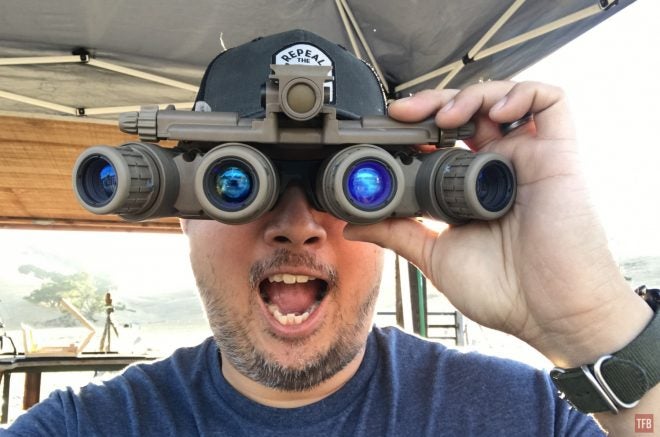A little over a year ago my friend JW Ramp was in CA and I got a chance to check out his ANVIS10 aka PNVG (Panoramic Night Vision Goggles). Well fast forward to last Wednesday, I got a chance to check out the more expensive L3 GPNVG (Ground PNVG). I was able to spend a little more time behind the GPNVG and check out some interesting things as well as confirm urban legends.
GPNVG-18




These GPNVG belong to a local Para Rescue unit. In fact, they have multiples of these. Here is the padded case for the GPNVG. The lid stores the battery pack and the monocular battery pack. More on the monocular battery pack later. Just below that in the main compartment is the hard case for the actual GPNVG.



The GPNVG hard case has belt loops so you can wear it like a fanny pack and show off your $45k NODs.


Just like the ANVIS10, the GPNVGs do not have an adjustable diopter. This set came with one snap on diopter set at -0.5.



Just like the PVS-31 and 1431, the GPNVS has a power receptacle on the bridge. The GPNVGs do not have an onboard power supply, you have to use the battery pack and cable.

GPNVG Battery Pack
The battery pack for the Ground PNVGs uses 4x CR123s. And velcro’s to the back of your helmet.


Here is my replica battery pack next to the real one. Both are fully functional and I was able to power the GPNVGs with the replica.


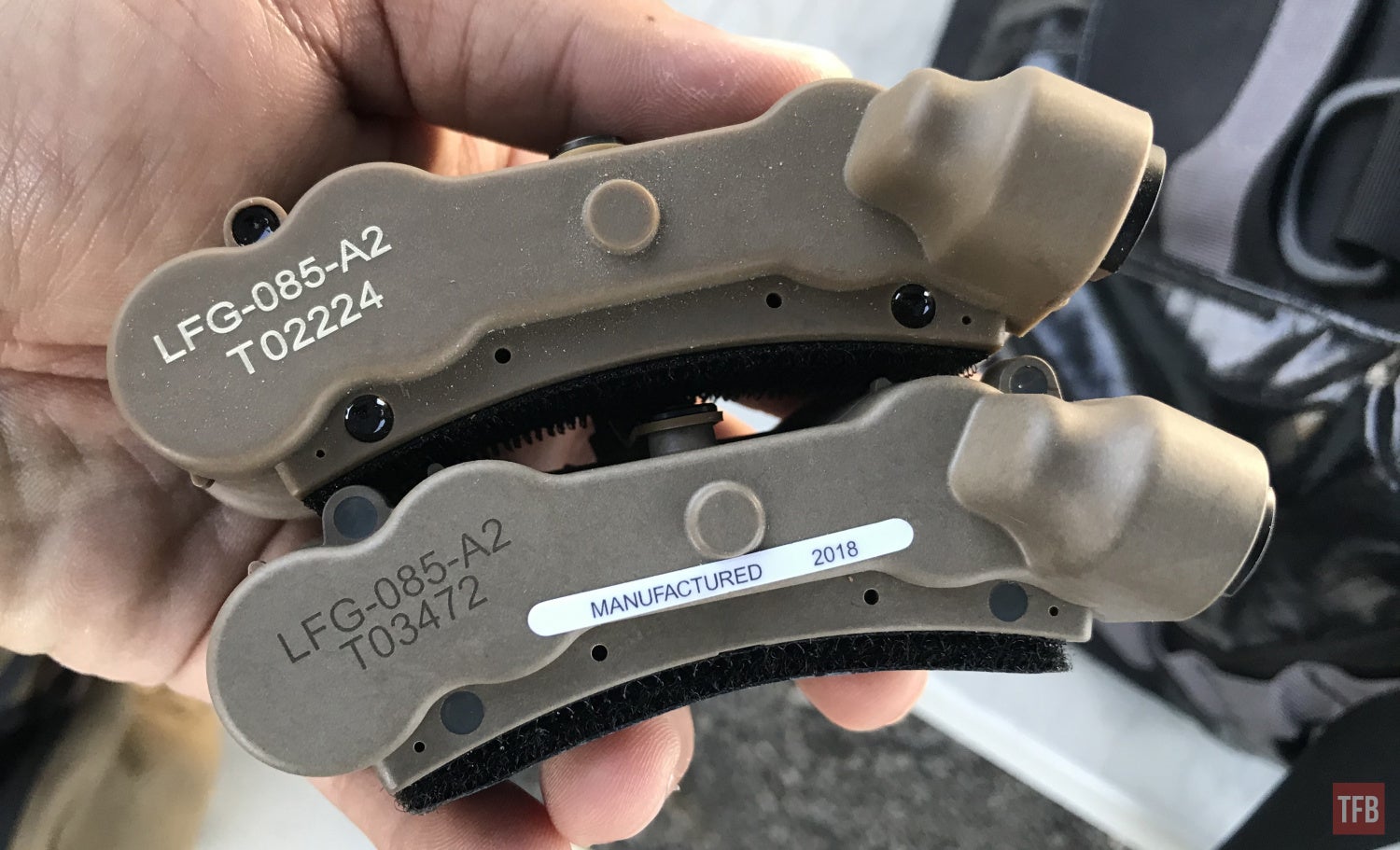


Monocular Battery Pack
The GPNVGs also come with a monocular battery pack. It uses a single CR123 battery.
It is sort of an urban legend that the GPNVGs can be separated and each pod can be individually powered. Here is a screencap from an L3 catalog.
While the catalog clearly shows this feature, I was unable to find anyone who could confirm how this works. Well, thanks to the Para Rescue guys they let me explore and discover this hidden feature.
The GPNVG instructions explain how to remove the monocular from the bridge. I would consider them to be siamese monoculars. They are not quite binos since the eyepieces are fused.

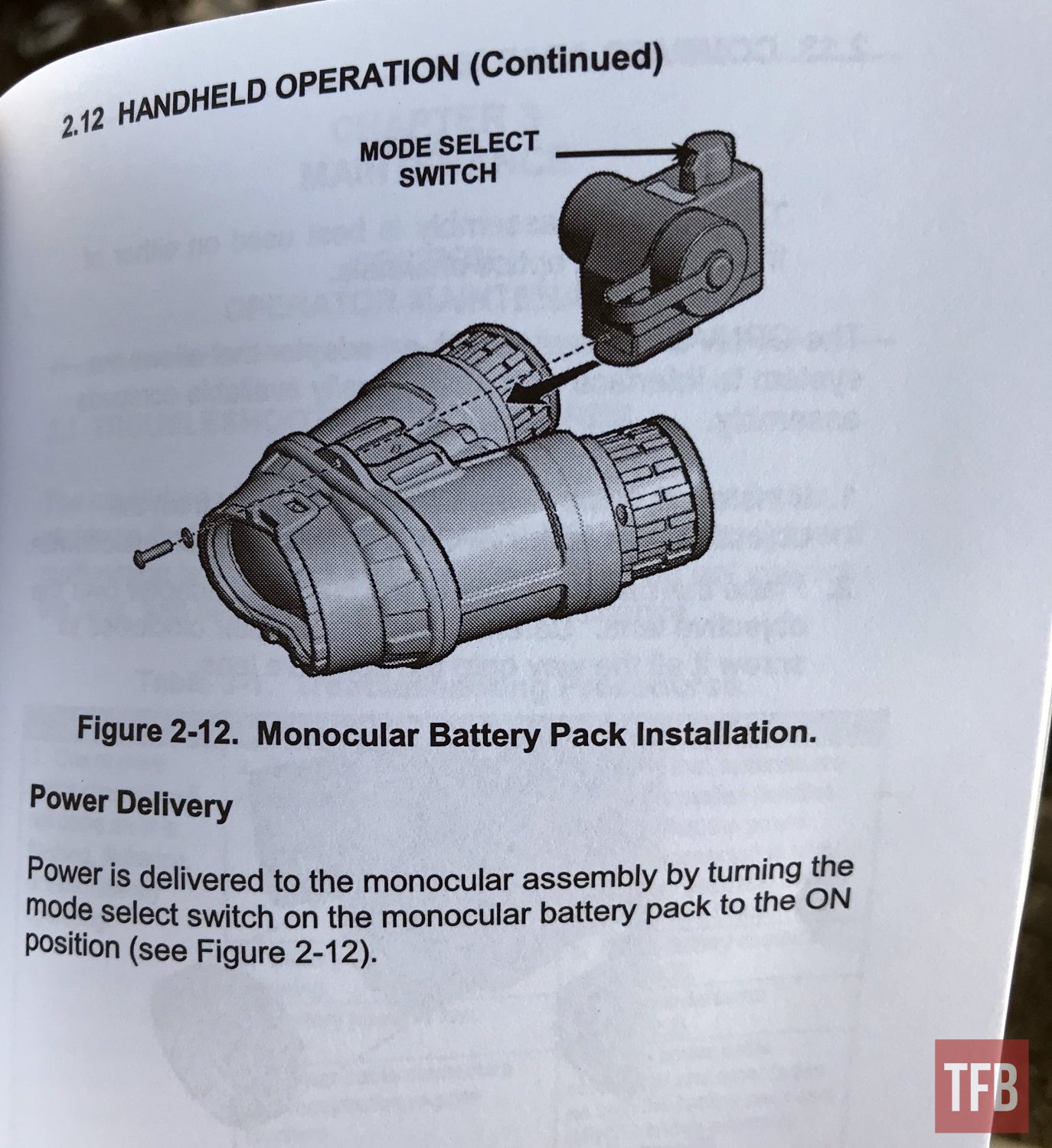
In the back, just above the rear eyepiece is a small hex screw. You need to remove that and the siamese monocular can be removed from the bridge. The monocular pods are dovetailed into the bridge. So you need to slide it toward the rear.


Now you just attach the monocular battery pack directly to the housing dovetail.



The most expensive opera glasses.

While this is interesting it seems like a gimmick. It is cool that it can do this but I am not sure about the practicality. Even though I jokingly held up the siamese monocular up to my face like a pair of opera glasses, you can not look through both tubes. You still only look through it like a PVS-14 monocular. Sure, you have a little bit wider field of view (FOV) but the price is ridiculous. There are people selling these for as low as $38,000 USD. Split that in half? $19,000 for one pod? Let’s knock it down some for the lack of the bridge and say $15,000 for a siamese monocular? That is just ridiculous. Dual tube binos at best cost $12,000 like the PVS-31s. You have some companies who believe night vision should be prohibitively expensive for no good reason. The PVS-21s I checked out last year? Steiner wants $22,000 for a new set!! The only case I can think of the siamese monocular having any redeeming potential is if you are a cyclops. You lost an eye for some reason. You will never be able to use dual-tube binos. Using a siamese monocular would give you better FOV for your one good eye. However, there is no method to mount the monocular to a helmet. Maybe if you bought the monocular with the bridge it could work for you but again the cost is so prohibitive it is not worth it.
Using The GPNVG
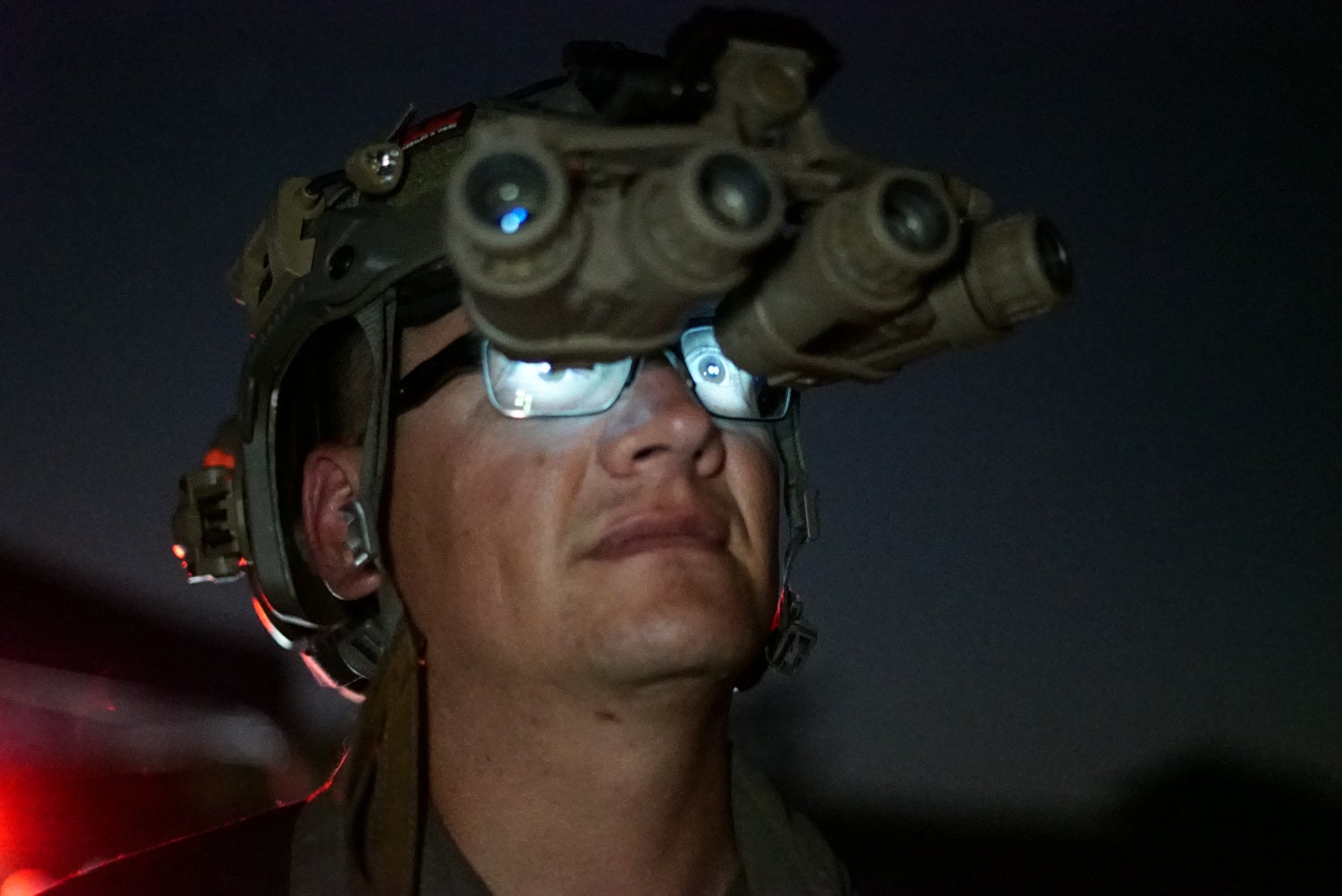
My buddy Kythe appreciating the Milky Way more by using the GPNVG
Many people say that the GPNVG is too heavy. While it is heavier than the PVS-31, nearly double the weight, it is not that far off from a pair of bridge PVS-14s. According to the manual, the whole system including the battery pack only weighs 28.1 oz. A pair of aluminum RNVG binos weigh 22 oz. What’s a mere 6 oz more for two more tubes and a wider field of view?

The PAS-29 COTI does work with the GPNVG. Below is a photo that circulates the internet. It appears to be a set of ground PNVGs with four COTIs (Clip-On Thermal Imagers). However, since I own real COTIs I can see that these are airsoft replicas.

I was able to mount my real COTI to the ground PNVGs and they work. You wouldn’t need four of them. At most you would need three. One for the middle and one on each outboard lens if you wanted thermal detection in your entire FOV. There is no benefit to having a fourth COTI.


The biggest eye-opening realization for me was when I got inside my FJ and looked out the front windscreen. I could see both A pillars without having to move my head at all. Below is a simulated image of what I saw.

The second moment was when I tried to aim passively through my EOTech. EOTech and night vision go together like Jack and Coke. But the ground PNVGs made the sight picture amazing. I could clearly see what was on either side of the EOTech without having to pull my head away from the optic and scan my surroundings.
Setting up the ground PNVGs takes a bit of adjustment to get the best image possible.

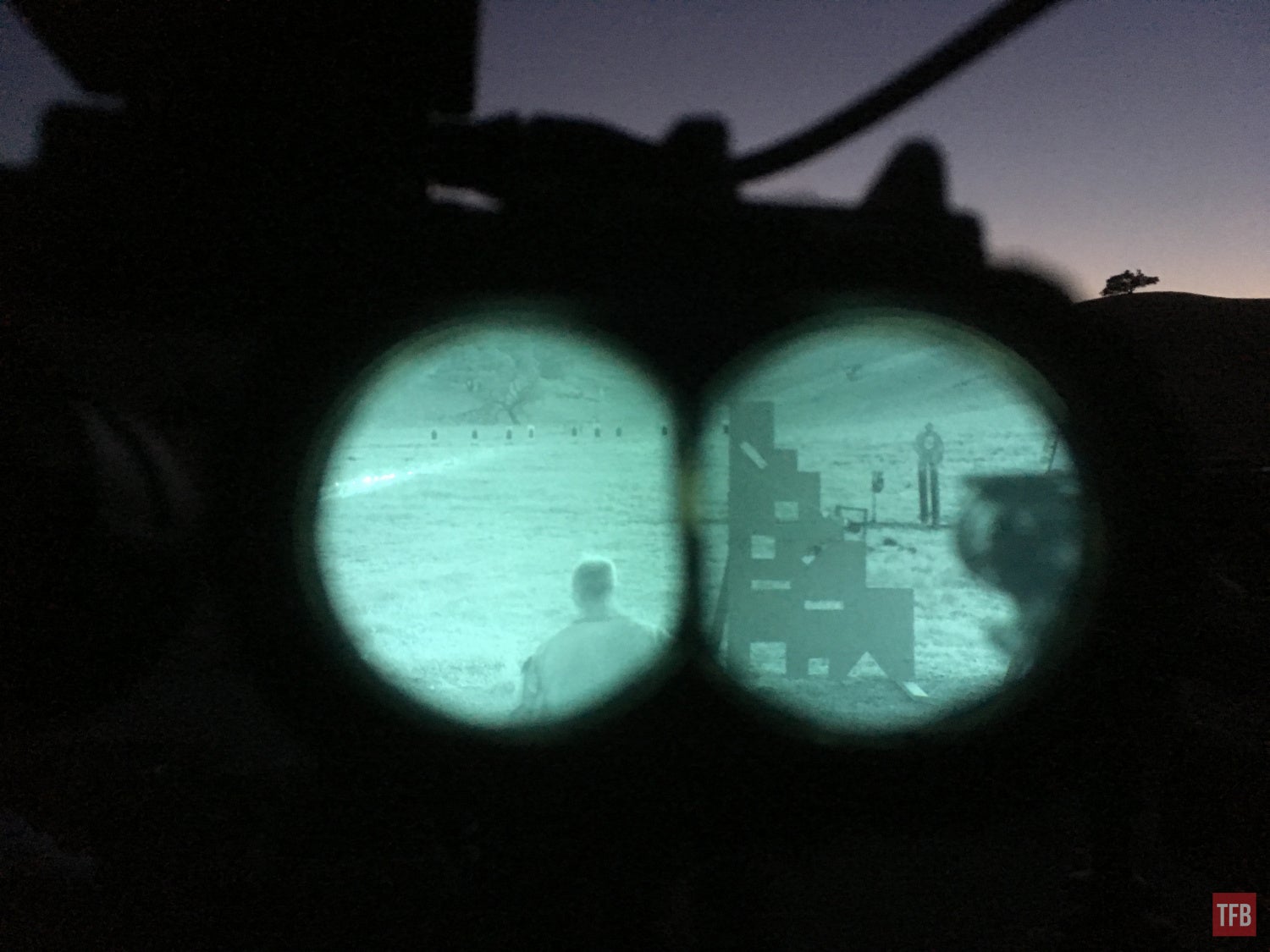
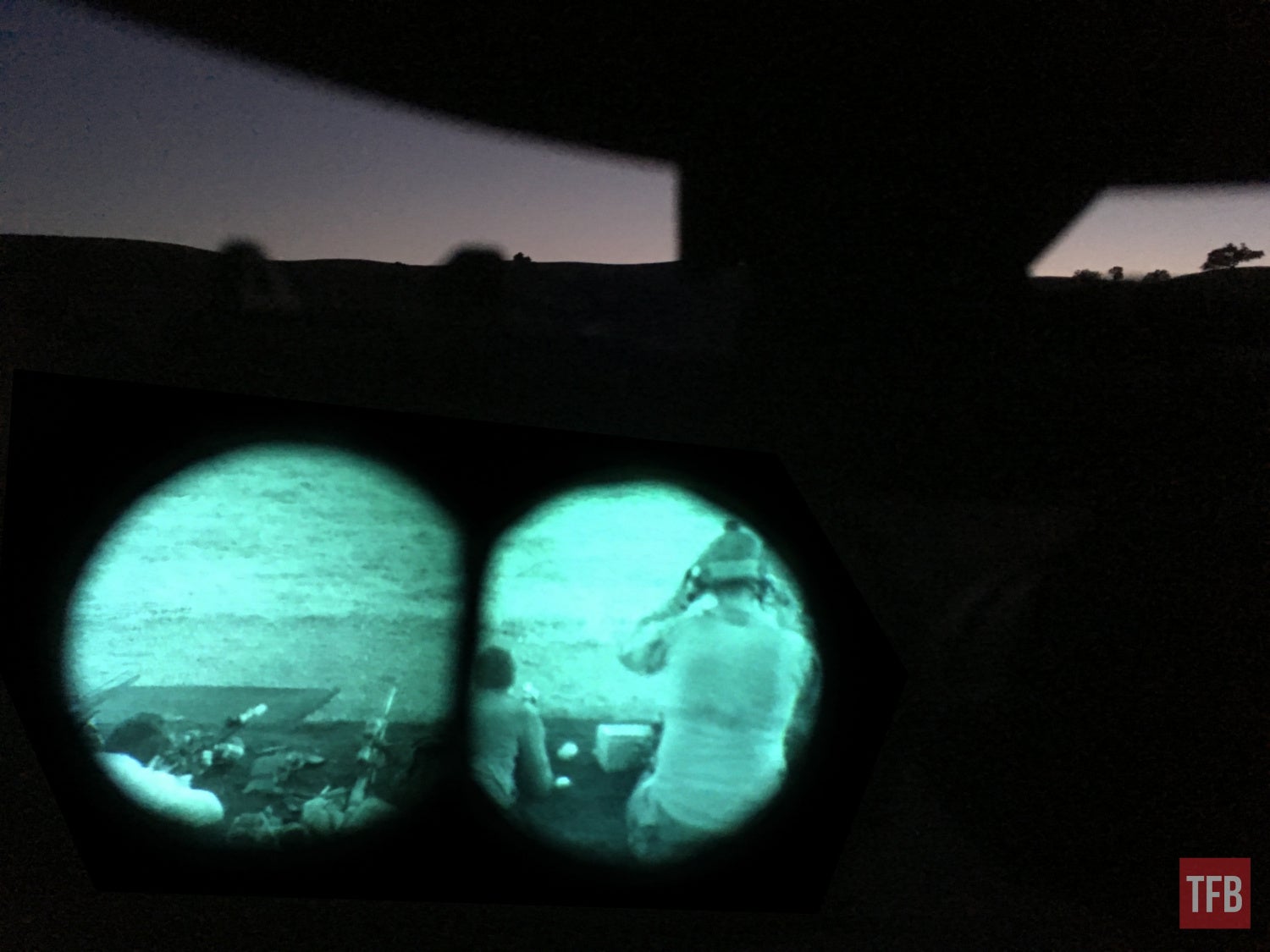


Just like the ANVIS10, you don’t see four circles. The two in board circles merge so you see a three bean pod like what the instructions depict above. I did find something interesting in the manual. It refers to what looks like a PVS-31 battery pack as a “cold weather battery pack”. The GPNVG did not have this battery pack and I can only go based on this drawing but I do not see what makes the PVS-31 backpack better suited for cold weather.

Final Thoughts On The GPNVG

Panoramic night vision goggles are cool and a holy grail for many. They were made even more popular by the movie Zero Dark Thirty.

Even at used prices of $38,000 it is hard to justify the cost of the GPNVGs. The Para Rescue guys prefer to use their PVS-31s rather than the bulkier ground PNVGs. They are a potential snag hazard and for the most part, you can compensate for the lack of FOV by simply turning your head more from side to side. ANVIS10s go for much less around $14,000 but they have their own issues. Spare parts and support for them are endangered. While panos are cool and fun to play with, you can do a lot with a good set of binos with awesome tubes inside. Huge thanks to the Para Rescue guys for letting me check out this rare set of NODs first hand.
 Your Privacy Choices
Your Privacy Choices
